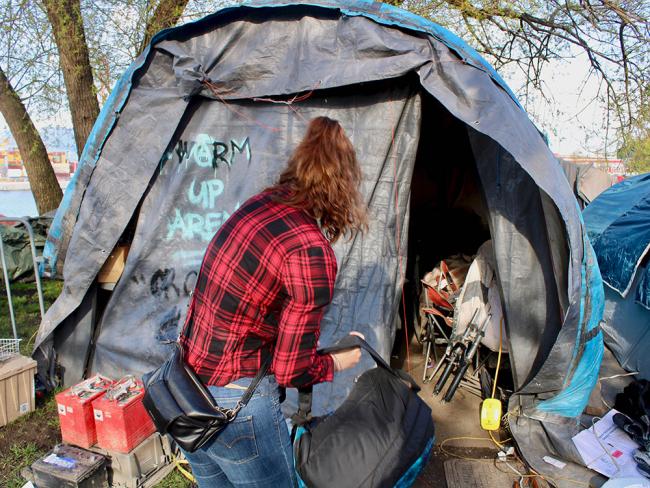Articles Menu

Nov. 30, 2022
The leader of an organization working to end homelessness is calling on the federal government to treat homelessness as an emergency and set up a system of cash transfers, much like the COVID-19 Canada Emergency Response Benefit program, to prevent people from losing their housing.
Tim Richter, president and CEO of the Canadian Alliance to End Homelessness, said the rising cost of living is hitting low-income people the hardest, putting them at risk of losing their housing.
“We’re working with about 70 communities around the country right now. And we’re seeing a wave of new homelessness,” Richter said.
“It seemed to begin during the pandemic, but has really accelerated with the cost of living crisis.”
National data on homelessness in Canada is scarce. While some cities, like Vancouver, conducted regular homeless counts before the pandemic, those efforts were put on pause during the last few years.
But over the past two years, homelessness has become more visible in cities and towns across Canada, and there are indicators that more people are now at risk of losing their housing. Food bank use in Canada, an early indicator of risk of homelessness, rose by 20 per cent between 2019 and 2021.
Many food banks have reported record levels of use. The Greater Vancouver Food Bank, which serves Vancouver, Burnaby, New Westminster and the North Shore, registered just over 900 food bank users in September, compared to an average of 500 per month at the beginning of 2022. A food bank in Toronto reported serving 8,000 new clients in June and recorded over 171,000 visits in the same month, a record high.
The BC Coroners Service has also recorded a sharp increase in deaths of unhoused people. In 2019, 129 homeless people died; in 2021, that number nearly doubled to 247. Half of those people were living on the street when they died; 78 per cent of the deaths were caused by illicit drug toxicity.
And there are troubling demographic trends. The number of homeless seniors has been growing in Metro Vancouver for the past two decades; 25 per cent of people who are homeless in the region are now over 55, and 45 per cent of those people said they first experienced homelessness when they were older than 55.
Richter said that mass homelessness in Canada started in the 1980s, when successive federal Conservative and Liberal governments stopped funding housing programs that at one point built or acquired an average of 16,000 housing units a year. For 30 years, the federal government was completely absent from the housing file, focusing instead on boosting homeownership.
Starting in 2017, the federal Liberals got back into housing, introducing a National Housing Strategy and promising to fund and build affordable housing. On homelessness, the strategy originally set a goal of cutting chronic homelessness by 50 per cent. Three years later, the federal government made a promise to eliminate chronic homelessness.
But as a recent report from the Office of the Auditor General made clear, the federal government departments tasked with ending homelessness have no way of measuring whether they’re actually making headway. The auditor general has recommended that Infrastructure Canada and the Canada Mortgage and Housing Corp. collect and analyze data and assess the impact of various programs on vulnerable groups.
Like many advocates and experts, Richter says the National Housing Strategy’s target of building 160,000 homes is inadequate when compared to the ongoing loss of affordable housing. According to the Canadian Alliance to End Homelessness, Canada has lost 552,000 low-cost rental homes since 2011.
Even if the federal government increases its affordable housing targets, it takes time to build new housing. That’s why Richter is calling for immediate income supports to prevent vulnerable people from falling into homelessness, and treating the homelessness crisis like a natural disaster. Richter pointed out that when floods or forest fires force people out of their homes, governments don’t wait to offer temporary housing and other supports.
“Seventy-five per cent of the people who are in core housing need in Canada, they’re only in core housing need not because of suitability or overcrowding or poor condition, but just because they can’t afford it,” Richter said.
“And 85 per cent of people who experience homelessness, they’re in and out really quickly – it’s just down to money.”
[Top photo: Fiona York, an advocate for people living in a homeless encampment in Vancouver’s Crab Park, outside the community’s warming tent in the spring of 2022. Photo for The Tyee by Jen St. Denis.]